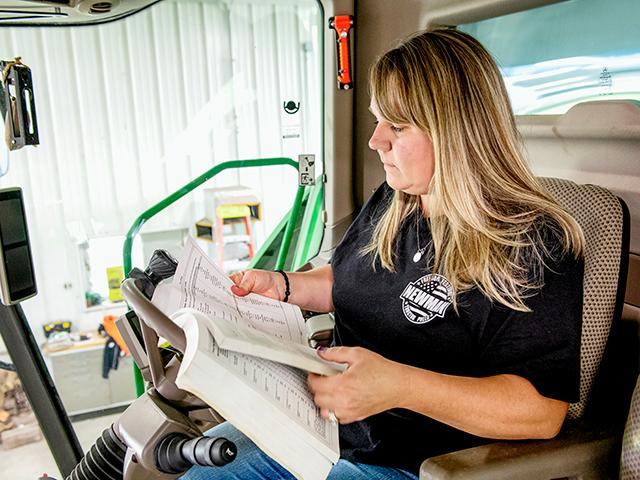Timing Critical for Forage Production
For Optimal Forage Production, Consider Proper Timing of Pasture Turnout
OMAHA (DTN) -- For those who graze livestock, the best time of the year is when they turn animals out into lush, green grass. However, grazers must utilize proper grazing management to ensure they are using forage as efficiently as possible.
Grazing too early can reduce plant vigor, thin existing stands and lower forage production. In addition, allowing pasture enough time to recover from drought in recent years is also a consideration this spring.
GRAZING TIMING MATTERS
In a press release titled "Proper Timing of Pasture Turnout Critical for Optimal Forage Production," North Dakota State University Extension (NDSU) examines the many factors affecting pasture turnout (https://www.ag.ndsu.edu/…).
Kevin Sedivec, NDSU Extension rangeland management specialist, said grazing before grass plants reach the appropriate stage of grazing readiness causes a forage production reduction by as much as 60%.
This can reduce carrying capacity (the number of livestock or the length of the grazing season) and animal performance. Grazing readiness for most domesticated pastures is at the 3-leaf stage, whereas grazing readiness for most native range grasses is at the 3.5-leaf stage.
Drought or over-grazing can further delay the grazing readiness of grasses and can reduce subsequent forage production, according to NDSU Extension livestock environmental stewardship specialist Miranda Meehan.
"This is especially true for cool-season grasses, which develop tillers in the fall," she said. "The development of these tillers has a direct impact on plant growth the next growing season."
Research at NDSU has found heavy grazing use of more than 80% in the fall can reduce forage production of cool-season-dominated rangeland and pasture by over 50% the following grazing season.
P[L1] D[0x0] M[300x250] OOP[F] ADUNIT[] T[]
If livestock grazed cool-season grasses below the bottom two leaves in the fall, the tillers likely did not survive the winter, Meehan said. If they do survive the winter, plant health is low and forage production will be reduced.
DROUGHT AFFECTS GRAZING
Drought stress also affects the survival of fall tillers. Fall drought either doesn't allow buds to come out of dormancy, thus preventing new tiller growing, or causes death to those tillers that did grow.
If tillers do not establish or survive the winter, a delay in growth and development will occur in the following growing season because new tillers will need to develop in the spring. This loss of fall tillers can create a delay in grazing readiness the following spring by 10-14 days.
Factor in drought and/or poor grazing management in the fall and grazing readiness can be delayed even longer, she said.
"Drought-stressed pasture will require special care this spring to help them recover," Meehan said. "These pastures must be given adequate time to recover."
Grazing too early will reduce plant vigor, thin existing stands, lower total forage production and increase disease, insect and weed infestations, Meehan said. Pastures and rangeland damaged by grazing too early may take several years of deferment or rest before the stand regains productivity, she said.
NDSU Extension specialists have observed as much as a three-week delay in grazing readiness for introduced cool-season grasses and a four-week delay for native cool-season species following drought.
DEVELOP GRAZING STRATEGIES
Depending on local forage resources and growing season conditions, it may be difficult to delay grazing until grasses reach grazing readiness. Both Sedivec and Meehan recommend the following strategies:
-- Start grazing annual forages, such as winter cereals, or domestic cool-season pastures, which will reach grazing readiness earlier in the spring.
-- Provide supplemental forage to livestock on domesticated pasture or hay land. However, be careful not to graze hay lands too early, too short or if muddy, as stands will be dramatically reduced in forage production due to reduced vigor and plant damage, leading to new infestations of weeds.
-- Continue dry lot feeding in May.
-- If grazing cannot be delayed, minimize the impact on a small area of your pastures or in one of your cells. Then rest that cell or area for the remainder of the grazing season and defer from grazing the next year (no spring grazing).
"While it may be tempting to start grazing early due to a lack of forage resources, it can have long-term impacts on forage production and plant health," Sedivec said.
As the grazing season progresses, NDSU Extension specialists recommend monitoring the degree of use to prevent negative impacts on developing tillers, especially in the fall. The recommended utilization level for proper use of grasslands is 40% to 60%, with some native species only tolerating 40% to 50% use.
Russ Quinn can be reached at Russ.Quinn@dtn.com
Follow him on social platform X @RussQuinnDTN
(c) Copyright 2024 DTN, LLC. All rights reserved.






